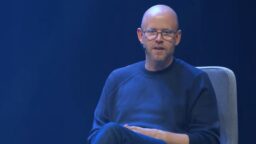Spotify surprised the music business earlier this month by announcing that it was acquiring two, rather than just one, notable podcasting companies.
Content creation firm Gimlet Media, in addition to distribution and analytics service Anchor, both New York-based companies, officially became part of Spotify via a company announcement on February 6.
That announcement didn’t mention how much Spotify paid to acquire the pair of companies, although it was widely reported that Gimlet Media cost SPOT over $200m, likely as much as $230m.
We now know how much Spotify splashed out on the pair. According to a 20-F SEC filing posted on February 12, Gimlet and Anchor cost Spotify a total amount of approximately €300m.
Using the average currency exchange rate for EUR-USD in January, this was the equivalent of $343m. The filing notes that Spotify paid the amount “primarily in cash, subject to closing adjustments”.
Elsewhere in its recent fiscal announcements, Spotify has revealed that it plans to spend between $400m and $500m on acquisitions (likely podcast-relevant) in 2019 – including the Anchor and Gimlet buys.
That leaves Spotify up to $157m in its projected warchest to spend on the sector this year above and beyond its shiny new pair of purchases.
“Based on radio industry data, we believe it is a safe assumption that, over time, more than 20% of all Spotify listening will be non-music content.”
Daniel Ek, Spotify (pictured)
Spotify is certainly taking podcasting’s potential seriously. In a blog piece following the announcement of the Gimlet/Anchor buys, SPOT boss Daniel Ek wrote: “Based on radio industry data, we believe it is a safe assumption that, over time, more than 20% of all Spotify listening will be non-music content.
“This means the potential to grow much faster with more original programming — and to differentiate Spotify by playing to what makes us unique — all with the goal of becoming the world’s number one audio platform.”
He also stated: “To really understand [our motivation for spending on podcasts], take the current value of the video industry. Consumers spend roughly the same amount of time on video as they do on audio. Video is about a trillion dollar market. And the music and radio industry is worth around a hundred billion dollars. I always come back to the same question: Are our eyes really worth 10 times more than our ears? I firmly believe this is not the case.”
Speaking on an earnings call with analysts on February 6, Spotify CFO Barry McCarthy, an ex-Netflix executive, further explained Spotify’s original content strategy when it comes to podcasts.
“If I could draw a Netflix analogy, when we launched [original content creation] at Netflix, first year, we spent [$50 million on it], and then every year after that we doubled it,” he said, adding: ” [This] greatly enhanced the value proposition for users, and over time it shifted the [company’s] cost structure from variable to fixed. There are many similar analogies that have the opportunity to play out here as well.”
Elsewhere in the Spotify 20-F document, the company revealed that, subsequent to December 31, SPOT had bought back 548,121 of its ordinary shares for €62m ($71m) under its share repurchase program.Music Business Worldwide




